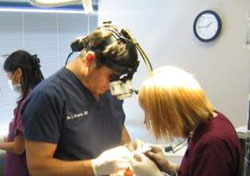Alopecia is a condition characterized by the loss of hair in the head or body. There are many different types of alopecia among men and women, and even though majority of hair loss cases are hereditary, there are those that may be brought about by other factors. For people suffering from hair loss and premature balding, it is important that you know how to handle the situation. Applying treatments using unverified “cures” may not only be a waste of money, but could also very well be risky. The number of people opting for hair transplantation has increased over the years but before you go this route, you should familiarize yourself with the most widely used hair transplant techniques today.

The “Old” Hair Transplant Technique
The hair transplant technique used in the past was quite different from the ones used today. Nevertheless, it paved the way for people to have a permanent (albeit unattractive) solution to hair thinning and balding. When hair transplant surgeons began studying and experimenting on the procedure in the 1950s, they would remove larger scalps than what was really necessary. During those times, large round grafts were being “planted” all over a person’s head, which looked anything but natural. The transplanted hair had a plug-like appearance similar to that of a doll’s hair. It’s a good thing that in the last two decades there have been significant changes to the hair transplant techniques being used by surgeons.
Follicular Unit Transplantation
Introduced in the 1990s, the follicular unit transplantation is considered a breakthrough hair transplant technique because it was the first one to give very natural-looking results. Also called the “strip technique,” the process involves extracting a thin donor strip usually obtained from the back of the head. Once extracted, it is placed under a specialized microscope so that follicular units can be dissected into grafts. Once done, incisions are made onto the recipient sites (bald areas) so that the grafts can be inserted. The procedure leaves a horizontal scar in the donor area but it can be effectively covered by hair. For patients that require major hair transplants, this hair transplant technique is the most ideal choice.
Follicular Unit Extraction
This method is the latest of the new hair transplant techniques known today. It was introduced in 2002 and the procedure consists of extracting tiny follicular units, small enough to fit directly into the holes of the recipient areas (bald area). The surgeon implants these follicular units and the small holes will just fill up in a matter of days after the procedure is done so the patient will only get very tiny scars. Aside from this obvious advantage, the follicular unit extraction hair transplant technique also gives the patient an option to choose pigmented hair (i.e. gray hair) so that they would look completely natural on the head. However, for those wanting to go for this technique, you need to know that it is more expensive since it requires hard work and takes a much longer time to finish.
